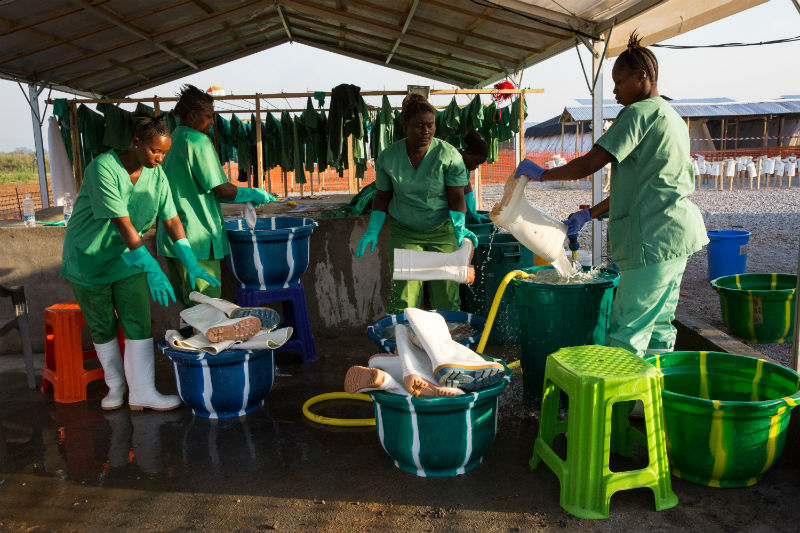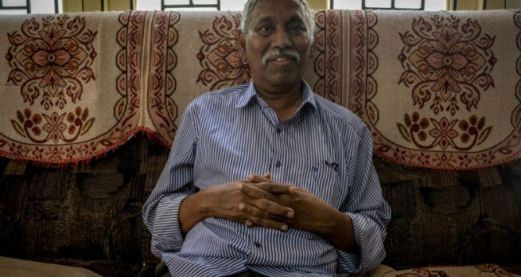 An MSF treatment centre in Sierra Leonne, during the 2014 ebola crisis
An MSF treatment centre in Sierra Leonne, during the 2014 ebola crisis
You have a mission to help people caught up in an emergency – would you put scientific research on your to-do list?
The answer isn’t an obvious ‘yes’. While the work of humanitarian and other NGOs may be guided by the products of science, scientific research tends not to be high on the agenda.
This is why, for the past three years, I’ve been more than intrigued to follow the Scientific Days events organised by the medical charity Medicins Sans Frontières (MSF) to showcase research and innovation from the field. You simply don’t get NGOs openly reporting frontline research very often.
And since it is so rare, I found myself asking this year, whether the science on show reaches others who could make use of it – and whether research conducted outside MSF feeds into their own thinking.
Held over the past two weeks in the UK, Malawi and India, MSF’s Scientific Days focused on infectious diseases and innovation – including an app that helps the charity map remote areas and the making of a bespoke autoclave to sterilise equipment for complex surgery.
When I noticed a shortage of references during the presentations to similar work outside MSF – arguably standard practice in scientific reporting – I wondered how much of the unique research on show goes beyond improving the charity’s own practices in the field, for example to link up with the wider research base.
The first answer came from MSF’s field research webpage, which states that it “has published articles in over 100 peer-reviewed journals and they have often changed clinical practice and been used for humanitarian advocacy”.
Javid Abdelmoneim, chair of trustees at MSF-UK, gave me the example of multi-drug resistant tuberculosis (MDR TB).
“We've done research that has resulted in reducing the regimen for MDR TB from two years to nine months, and having had that adopted by the WHO as a global standard.”
Vickie Hawkins, MSF-UK’s executive director, spoke more directly to how the research feeds into the policy systems in countries where the charity works.
“Wherever we’re working, we’re never working in a vacuum,” she told me. “We generally try to cooperate and work with ministries of health – share our information so it can feed into the bigger picture the ministry is responsible for providing. And we cooperate in that with other medical organisations.”
Hawkins added that much of the published research presented was co-produced by health ministries.
Still, the question of how MSF’s science relates to others’ kept nagging me — the research may have an impact, but why couldn’t I see signs of cross-referencing with what others are doing?
Abdelmoneim says part of the answer is in the unique nature of the charity’s work. “We're doing a lot of things that are so innovative that there is no one else to compare it with,” he told me, citing text message surveillance methods developed with the WHO and health ministry in Sierra Leone. In other cases, he added, the science is specific to MSF’s work.
Aid agency sources agree the charity does more than other NGOs on research, often pushing boundaries to try new approaches. When it comes to health, they fill a big gap, often in places where no one else dares to tread.
The charity’s work also touches on the political – for years it has campaigned on access to drugs, and now vocally opposes Europe’s migration policies – which the research also feeds into. “MSF is a credible voice because we link it [evidence] to our medical work,” Hawkins says. “If we talk about the case of refugees and migrants, medical data can demonstrate that government policies are causing harm to people.”
What I heard did enough to overturn an initial impression that this vital frontline science might be lacking the visibility that would help both itself and others in the field.
But humanitarianism remains a field with a weaker tradition of evidence than health and medicine have — and even when evidence exists, it does frustratingly little to change things, one aid agency veteran told me.
NGOs are in a hurry, and are often under pressure to prove, rather than question, their approaches. These are among a few reasons why NGOs and academic research make uneasy bedfellows.
In such an environment, MSF’s science is all the more important, and makes an argument for why it’s worth the investment.
This article was originally published by SciDevNet under a CC-BY licence

Rate and Review
Rate this article
Review this article
Log into OpenLearn to leave reviews and join in the conversation.
Article reviews